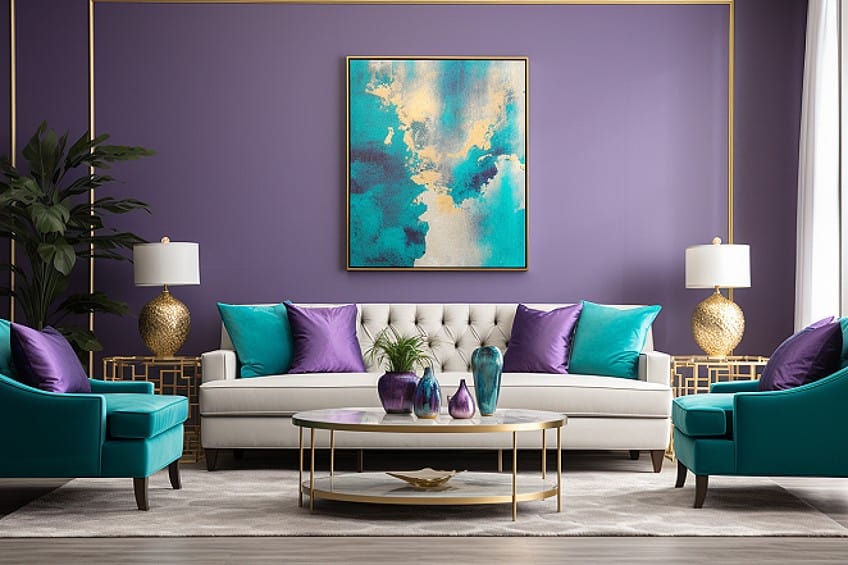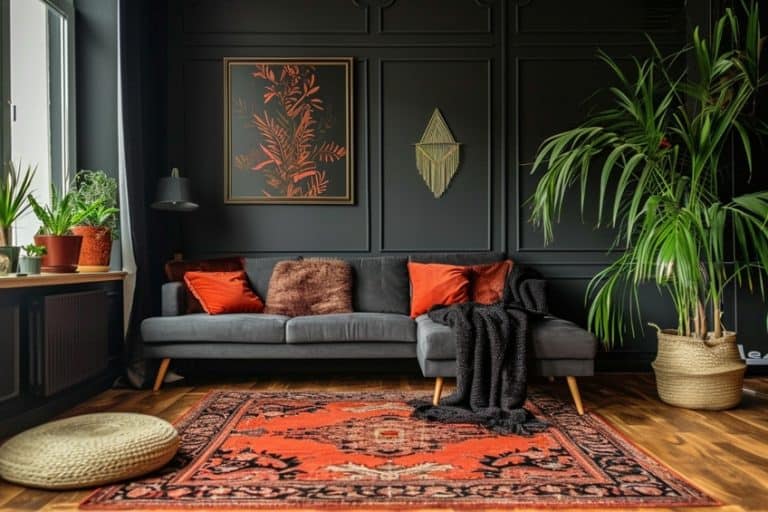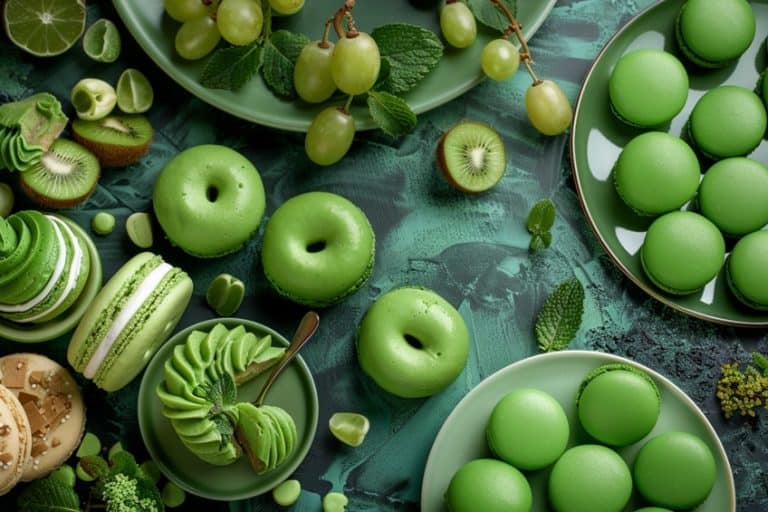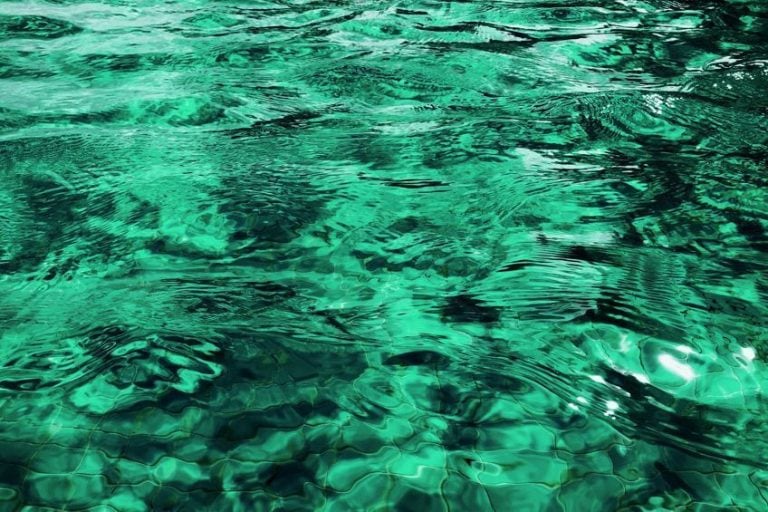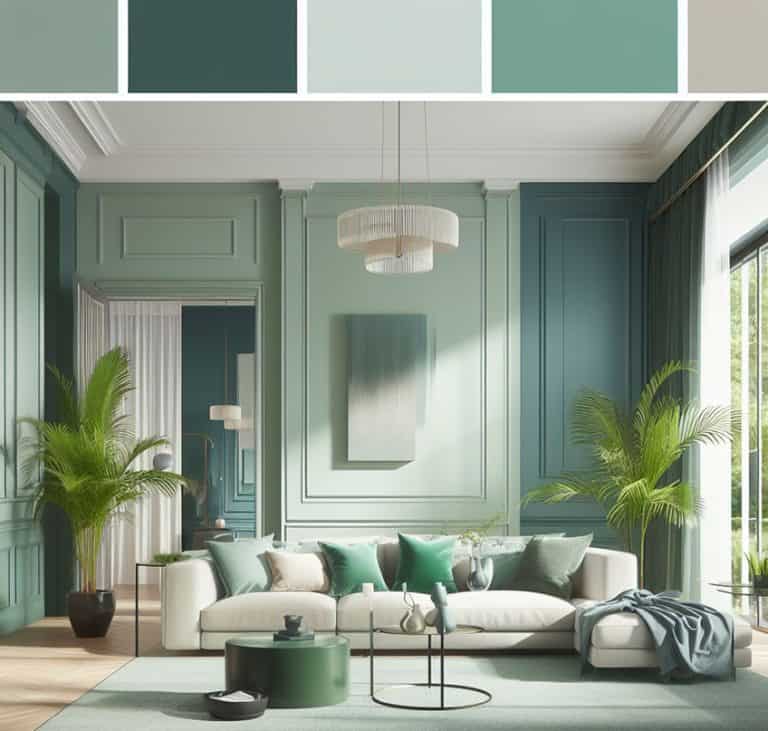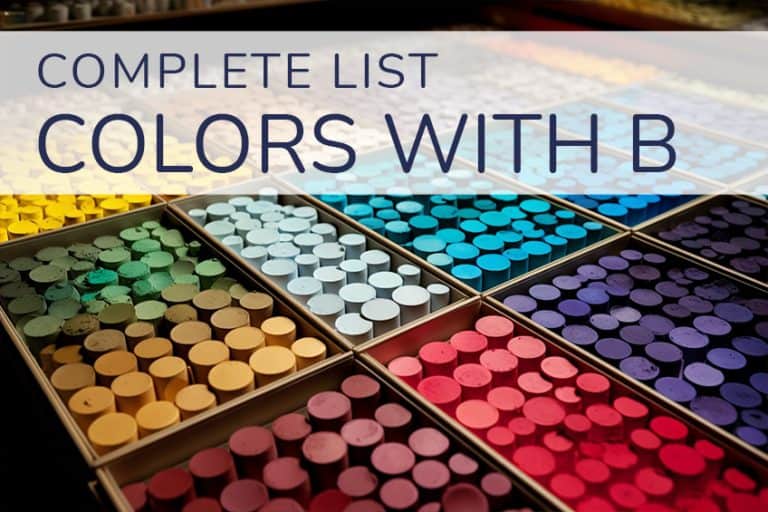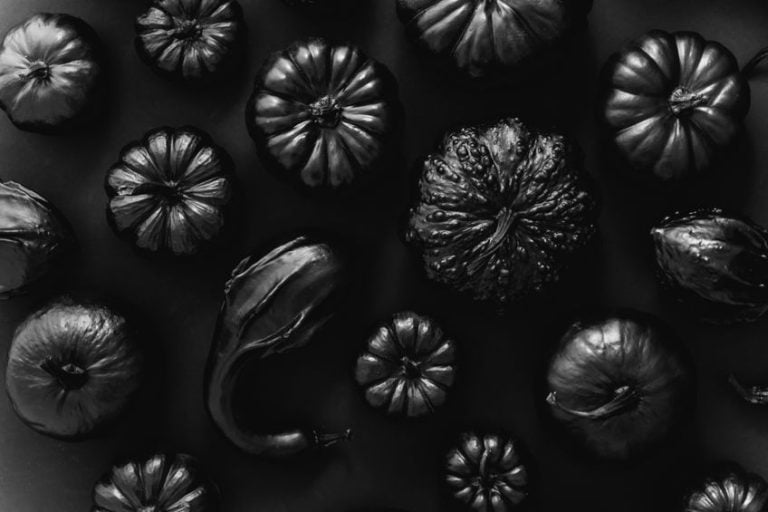What Colors Go With Purple? – Top 15 Perfect Color Combinations
Renovating your house and wondering what colors go with purple? Purple is one of those colors that we don’t see often enough used in interior design color schemes. However, as with all colors, finding appropriate color combinations for purple makes it a much less daunting color to incorporate in an interior setting. This article will demonstrate 10 optimal color pairings that complement purple and provide guidance on incorporating them into your home decor.
Purple Color Combinations
To discover effective purple color combinations, one can apply color theory alongside the color wheel. It should be noted that each shade and hue has its own color code; therefore, different values of the below color theories will apply depending on the shade of purple you are using. The color theories that we will be looking at include complementary colors, split complementary colors, monochromatic colors, triadic colors, and analogous colors.
| Monochromatic Colors | Colors along the line drawn from purple to the center of the color wheel, sharing the same hues but differing in shades. Ideal for interior design, creating rhythm and calm while adhering to a specific color scheme. |
| Complementary Color | Yellow is the complementary color of purple, located directly opposite on the color wheel. While highly complementary, these colors also contrast strongly, requiring careful use, especially in saturated hues. |
| Triadic Colors | Triadic colors include orange and green. Triadic combinations tend to be richer in hues. Suitable for highlighting one color in an interior while introducing the other two minimally to enhance purple. |
| Analogous Colors | Ideal for using a variety of colors while maintaining a cohesive and visually aesthetic interior. Analogous colors, sharing similar undertones, work well for a cool or warm color palette. |
| Split Complementary | Positioned on either side of purple’s complementary color, yellow, orange, and green serve as split complementary colors. When combined, this palette creates an unexpected yet potentially effective color combination, especially when selecting the right hues. Suitable for interior settings, offering a unique and dynamic color scheme. |
What Colors Go With Purple?
Taking the above color theories and color psychology into consideration, let’s have a look at a few color combinations with specific shades and hues. Be sure to play around with these pairings, and you will most certainly find a purple color combination that works well for almost any setting in an interior.
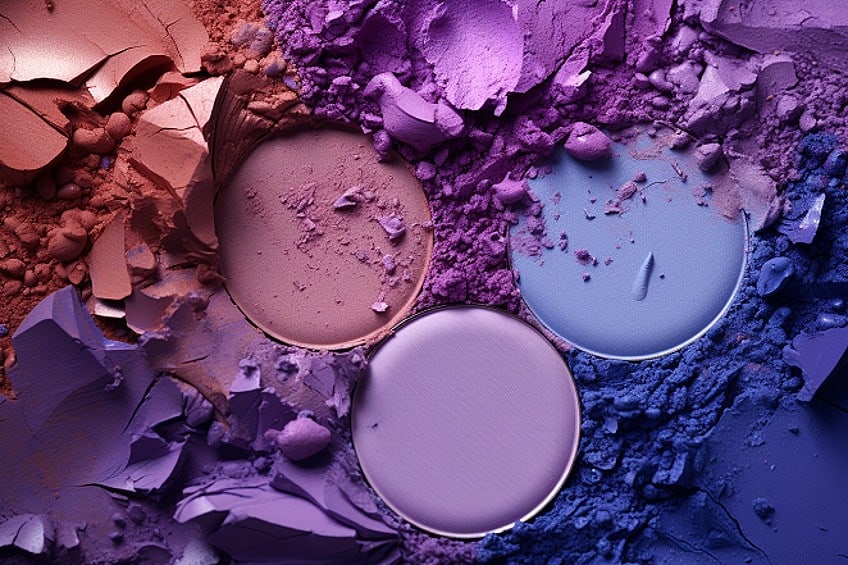
Purple and Gray
The neutral and versatile nature of gray provides a sophisticated backdrop for purple, allowing it to take center stage while maintaining a timeless and balanced aesthetic, making it suitable for various design styles.
| Shade | Hex Code | CMYK Color Code (%) | RGB Color Code | Color |
| Purple | #916D9F | 9, 31, 0, 38 | 145, 109, 159 | |
| Gray | #808080 | 0, 0, 0, 50 | 128, 128, 128 |
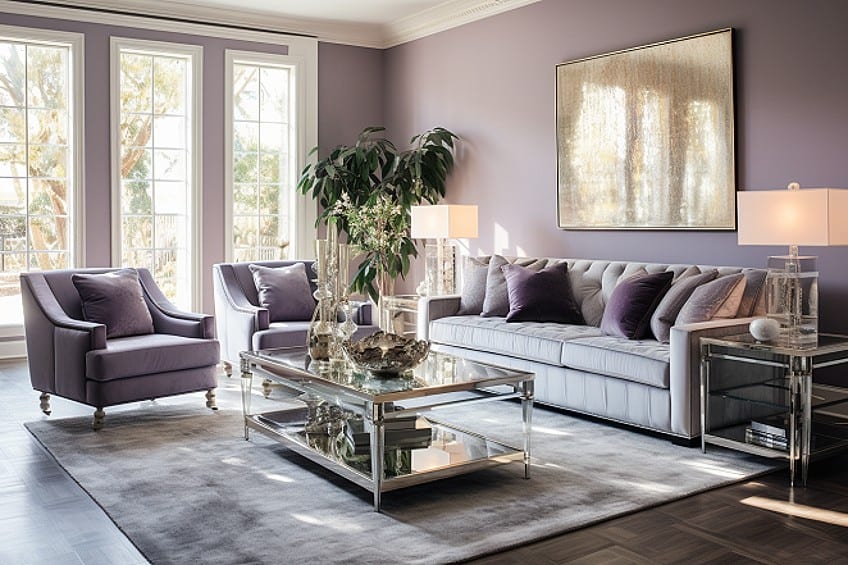
Purple and Gold
The pairing of gold with purple brings a sense of opulence and warmth to interior spaces, creating a luxurious atmosphere. This combination adds depth and richness, making it particularly well-suited for elegant and regal design themes.
| Shade | Hex Code | CMYK Color Code (%) | RGB Color Code | Color |
| Purple | #916D9F | 9, 31, 0, 38 | 145, 109, 159 | |
| Gold | #D4AF37 | 0, 14, 71, 17 | 212, 175, 55 |
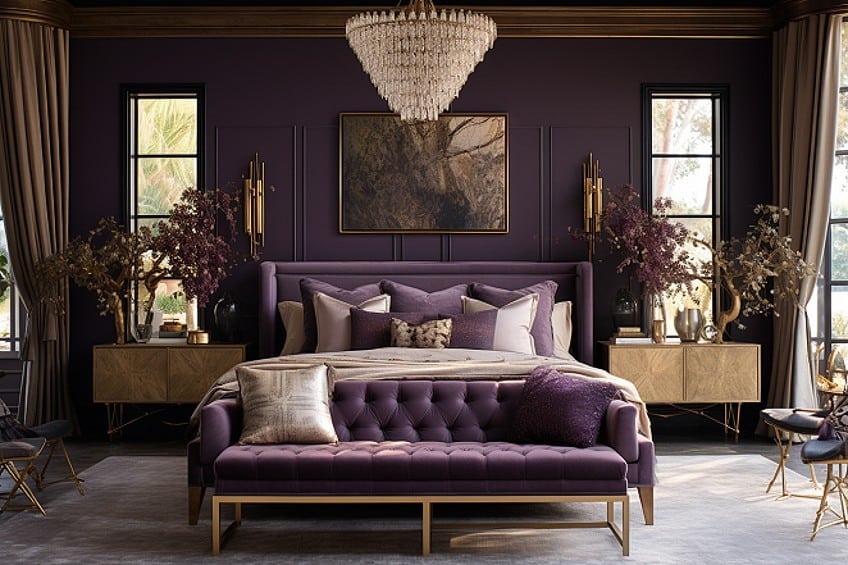
Purple and Cream
The soft contrast of cream with purple evokes a serene and classic ambiance, offering a fresh and timeless palette. This combination works well in creating a calm and inviting atmosphere, especially in bedrooms and living areas.
| Shade | Hex Code | CMYK Color Code (%) | RGB Color Code | Color |
| Purple | #916D9F | 9, 31, 0, 38 | 145, 109, 159 | |
| Cream | #FFFDD0 | 0, 0, 25, 0 | 255, 253, 208 |
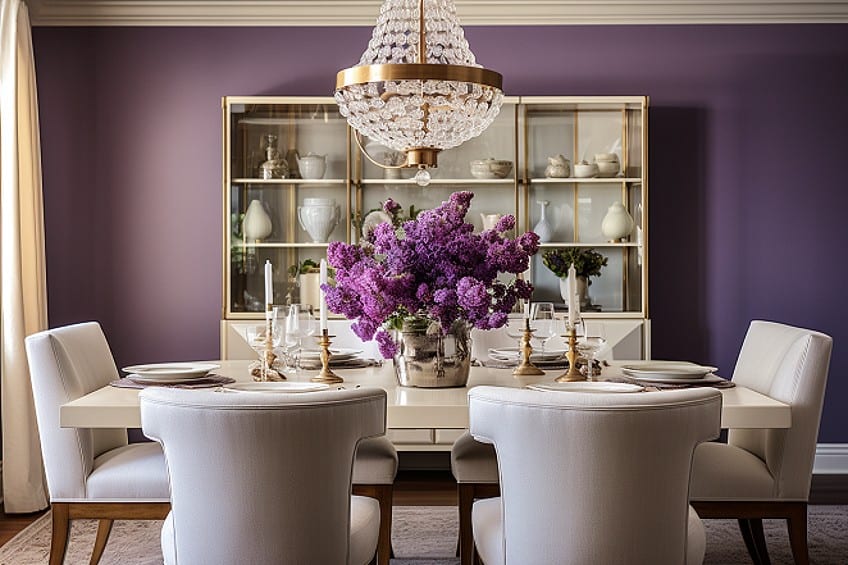
Purple and Teal
Teal’s bold and vibrant presence complements purple, injecting energy and visual interest into the design. The combination of these two colors creates a dynamic and contemporary look, ideal for modern and eclectic interiors.
| Shade | Hex Code | CMYK Color Code (%) | RGB Color Code | Color |
| Purple | #916D9F | 9, 31, 0, 38 | 145, 109, 159 | |
| Teal | #008080 | 100, 0, 33, 50 | 0, 128, 128 |
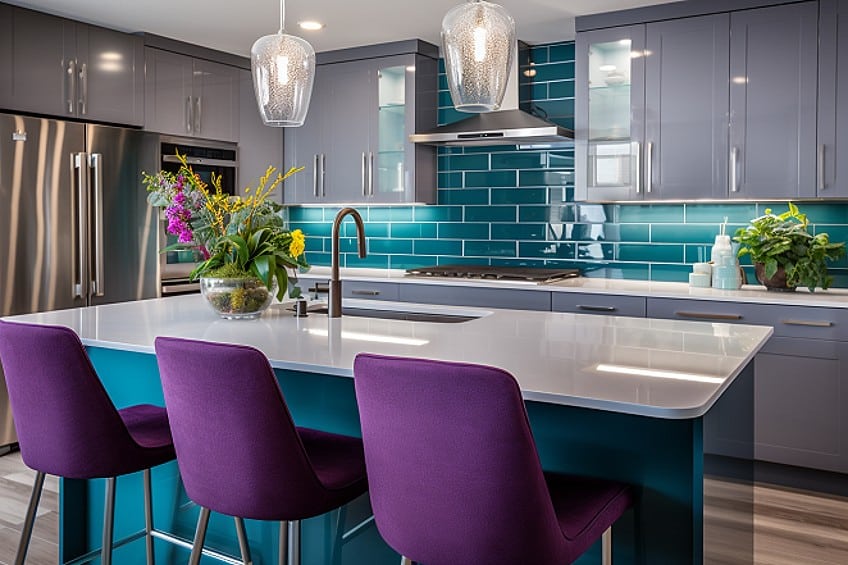
Purple and Coral
Adding a pop of coral to purple infuses spaces with energy and playfulness, making it an excellent choice for lively and eclectic design schemes. The warm undertones of coral enhance the overall vibrancy of the space.
| Shade | Hex Code | CMYK Color Code (%) | RGB Color Code | Color |
| Purple | #916D9F | 9, 31, 0, 38 | 145, 109, 159 | |
| Coral | #FF6F61 | 0, 62, 46, 0 | 255, 111, 97 |
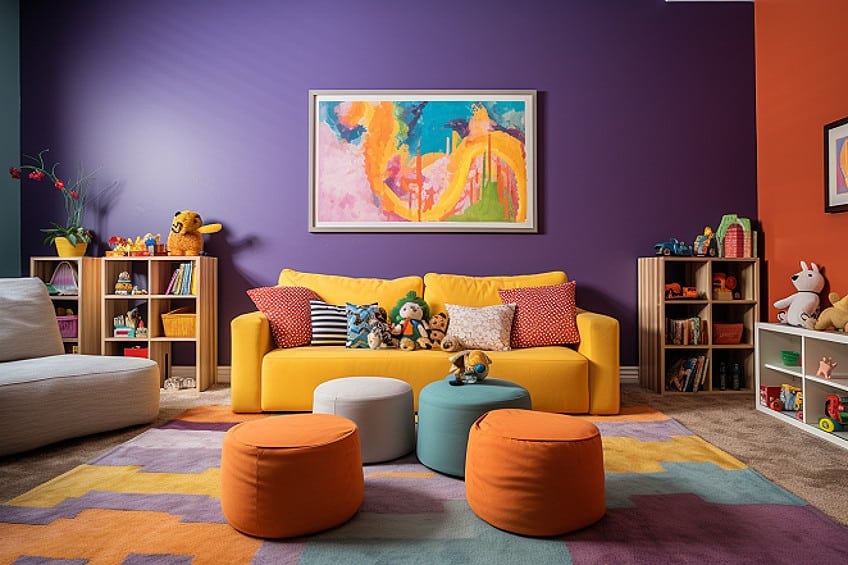
Purple and Olive Green
The earthy and muted tones of olive green harmonize with purple, creating a calming and nature-inspired design. This combination is well-suited for spaces where a relaxed and tranquil atmosphere is desired, such as bedrooms or reading nooks.
| Shade | Hex Code | CMYK Color Code (%) | RGB Color Code | Color |
| Purple | #916D9F | 9, 31, 0, 38 | 145, 109, 159 | |
| Olive Green | #556B2F | 47, 0, 64, 43 | 85, 107, 47 |
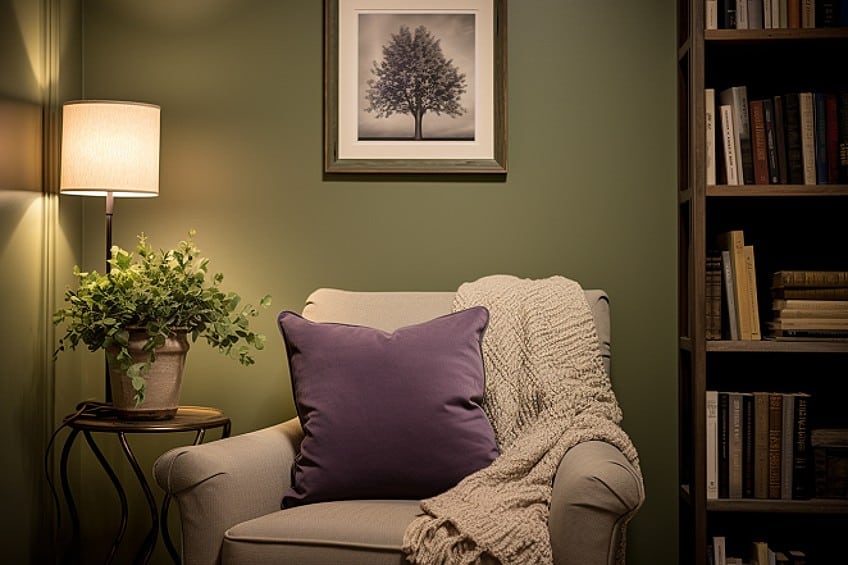
Purple and Silver
Silver’s cool tones complement purple, offering a sleek and modern touch to interior design. This combination is perfect for contemporary settings, adding a touch of sophistication and creating a visually appealing contrast.
| Shade | Hex Code | CMYK Color Code (%) | RGB Color Code | Color |
| Purple | #916D9F | 9, 31, 0, 38 | 145, 109, 159 | |
| Silver | #C0C0C0 | 0, 0, 0, 25 | 192, 192, 192 |
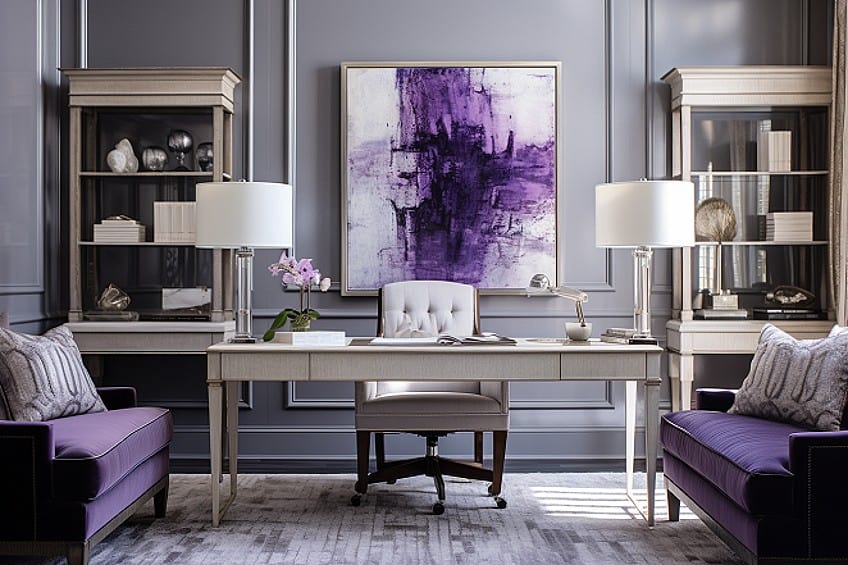
Purple and Turquoise
The refreshing and invigorating qualities of turquoise pair well with purple, creating a lively and balanced color scheme. This combination works wonders in spaces where a vibrant and cheerful ambiance is desired, such as kitchens or playrooms.
| Shade | Hex Code | CMYK Color Code (%) | RGB Color Code | Color |
| Purple | #916D9F | 9, 31, 0, 38 | 145, 109, 159 | |
| Turquoise | #40E0D0 | 73, 0, 18, 0 | 64, 224, 208 |
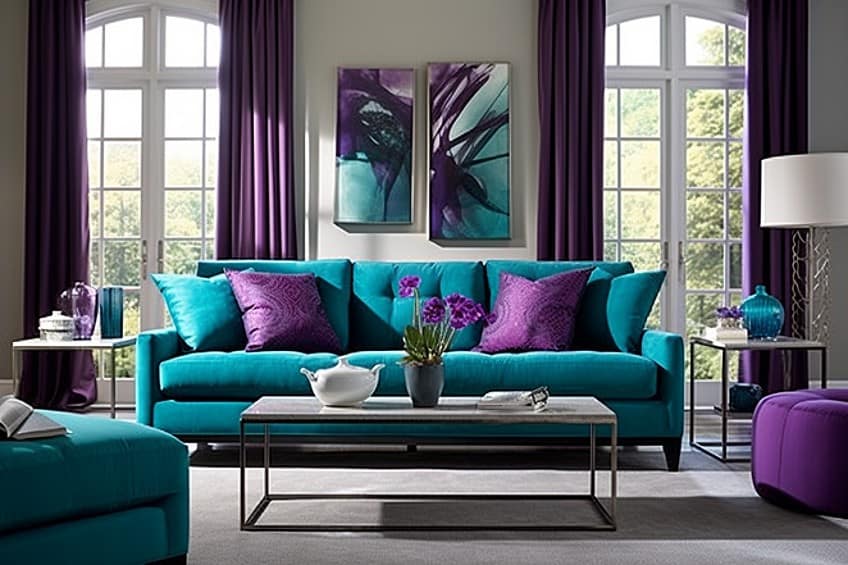
Purple and Mustard Yellow
Mustard yellow adds a trendy and bold element to purple, creating a dynamic and visually stimulating design. This combination is ideal for those seeking a contemporary and fashion-forward look in their interior spaces.
| Shade | Hex Code | CMYK Color Code (%) | RGB Color Code | Color |
| Purple | #916D9F | 9, 31, 0, 38 | 145, 109, 159 | |
| Mustard Yellow | #FFD700 | 0, 10, 100, 0 | 255, 215, 0 |
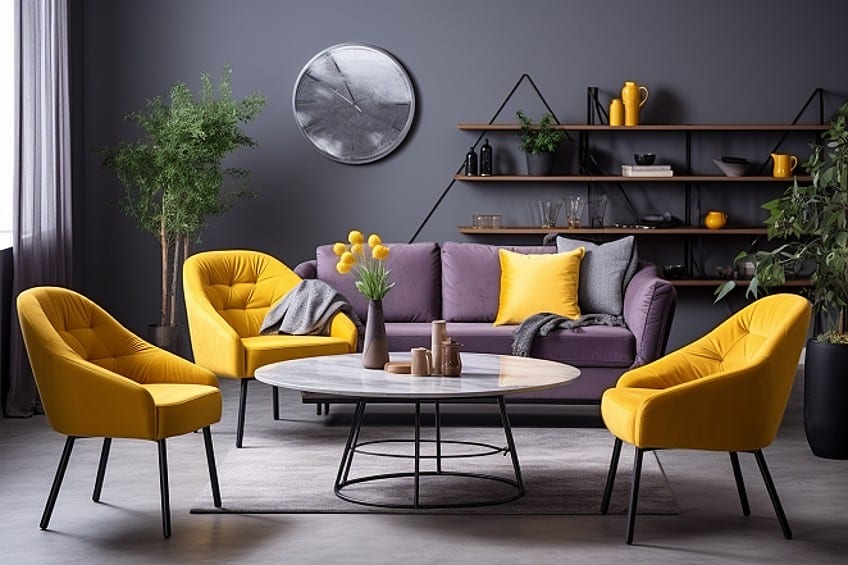
Purple and Navy Blue
The classic and timeless pairing of navy blue with purple exudes elegance and sophistication. This combination is well-suited for formal spaces, bringing a sense of tradition and refinement to the overall interior design.
| Shade | Hex Code | CMYK Color Code (%) | RGB Color Code | Color |
| Purple | #916D9F | 9, 31, 0, 38 | 145, 109, 159 | |
| Navy Blue | #001F3F | 100, 50, 0, 0 | 0, 31, 63 |
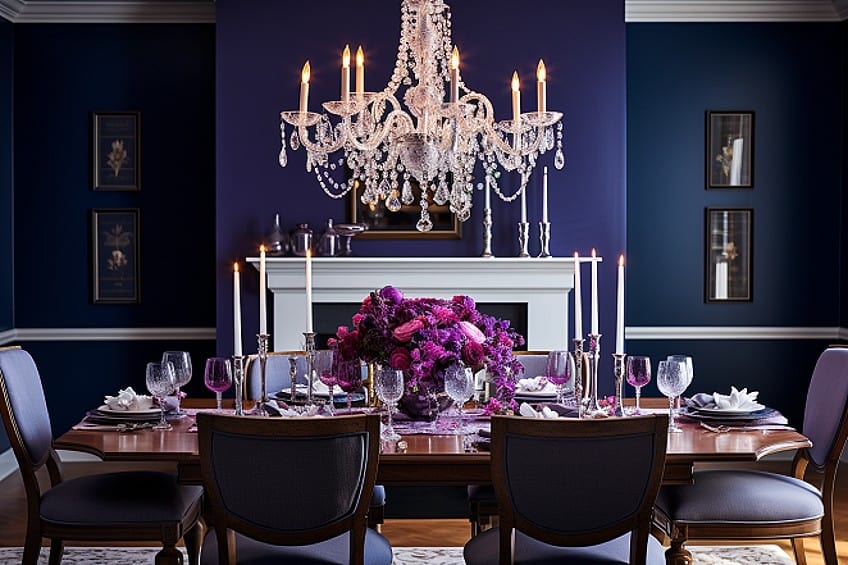
The Different Shades of Purple
From the deep and regal hues reminiscent of majestic velvet to the light and delicate lavender tones reminiscent of a serene field in bloom, the spectrum of purple is a testament to its versatility. Dark purples evoke a sense of mystery and sophistication, while lighter shades convey a soft and dreamy ambiance. The richness of royal purple exudes opulence and grandeur, while mauve whispers of vintage charm.
| Shade | Hex Code | CMYK Color Code | RGB Color Code | Background Color |
|---|---|---|---|---|
| Lavender | #E6E6FA | 19, 20, 0, 0 | 230, 230, 250 | |
| Lilac | #C8A2C8 | 24, 39, 0, 20 | 200, 162, 200 | |
| Plum | #8E4585 | 39, 76, 0, 47 | 142, 69, 133 | |
| Dark Purple | #4B0082 | 86, 100, 0, 49 | 75, 0, 130 | |
| Violet | #EE82EE | 71, 100, 0, 11 | 138, 43, 226 |
Lavender Combined With Silver
Lavender’s soft and calming nature pairs harmoniously with the sophistication of silver. This combination brings an air of elegance to interior spaces, creating a serene ambiance that is both timeless and refined. The cool tones of lavender complement the metallic sheen of silver, making it an ideal choice for bedrooms or living areas seeking a balance of tranquility and modernity.
| Shade | Hex Code | CMYK Color Code | RGB Color Code | Background Color |
|---|---|---|---|---|
| Lavender | #E6E6FA | 19, 20, 0, 0 | 230, 230, 250 | |
| Silver | #C0C0C0 | 0, 0, 0, 25 | 192, 192, 192 |
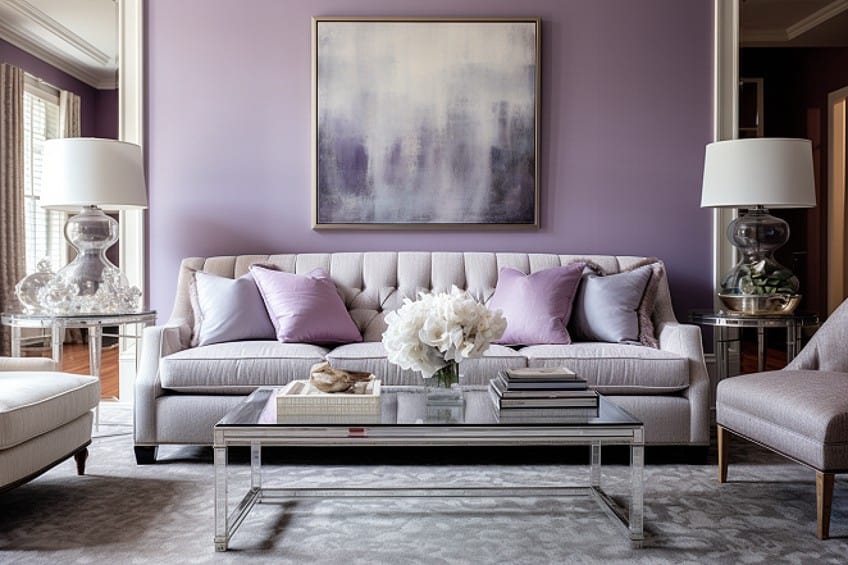
Lilac Combined With Sage Green
Lilac’s gentle and romantic essence finds a complementary partner in the earthy tones of sage green. Together, they create a soothing and nature-inspired palette, making this combination perfect for spaces that aim to evoke a sense of relaxation and connection with the outdoors. The softness of lilac enhances the freshness of sage green, making it an appealing choice for bedrooms or living rooms seeking a harmonious and calming atmosphere.
| Shade | Hex Code | CMYK Color Code | RGB Color Code | Background Color |
|---|---|---|---|---|
| Lilac | #C8A2C8 | 24, 39, 0, 20 | 200, 162, 200 | |
| Sage Green | #8F9779 | 38, 21, 60, 0 | 143, 151, 121 |
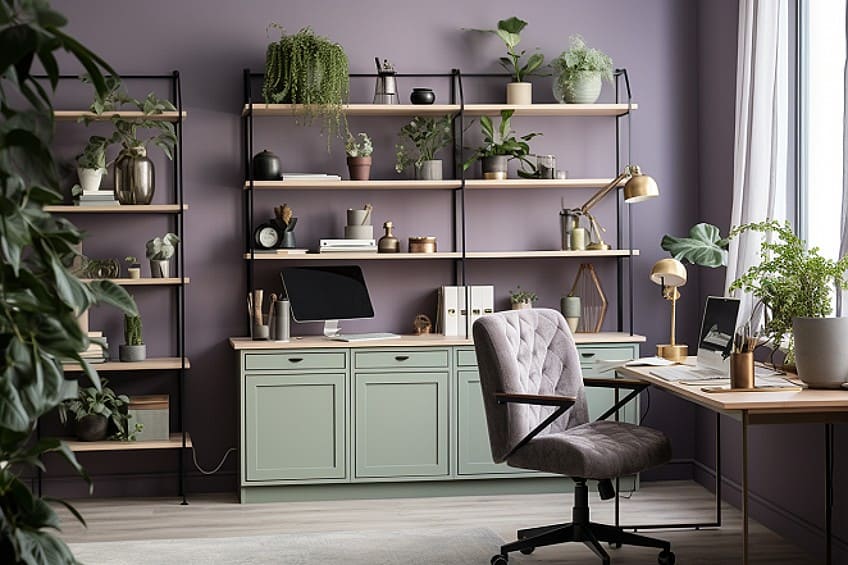
Plum Combined With Champagne
The richness of plum combined with the warmth of champagne creates a luxurious and inviting atmosphere. This color combination adds depth and opulence to interior spaces, making it well-suited for areas where a touch of glamour is desired, such as dining rooms or entertainment spaces. The deep, regal undertones of plum harmonize with the shimmering sophistication of champagne, resulting in a palette that exudes sophistication and style.
| Shade | Hex Code | CMYK Color Code | RGB Color Code | Background Color |
|---|---|---|---|---|
| Plum | #8E4585 | 39, 76, 0, 47 | 142, 69, 133 | |
| Champagne | #F7E7CE | 2, 5, 16, 0 | 247, 231, 206 |
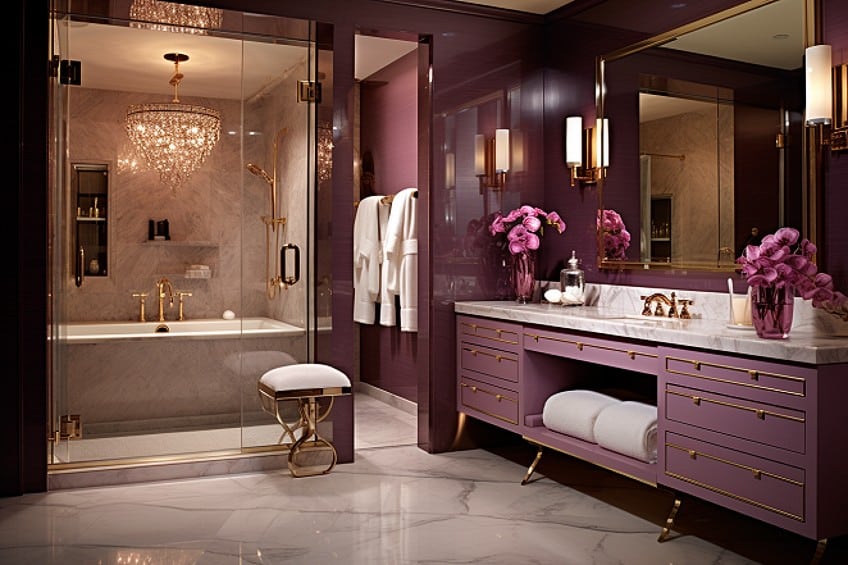
Dark Purple Combined With Gold
The pairing of dark purple and gold brings a sense of drama and opulence to interior design. Dark purple’s mysterious allure complements the richness of gold, creating a color scheme that radiates luxury and regality. This combination is particularly well-suited for accent details or statement pieces, adding a touch of grandeur to spaces like entryways or home offices.
| Shade | Hex Code | CMYK Color Code | RGB Color Code | Background Color |
|---|---|---|---|---|
| Dark Purple | #4B0082 | 86, 100, 0, 49 | 75, 0, 130 | |
| Gold | #FFD700 | 0, 0, 100, 0 | 255, 215, 0 |
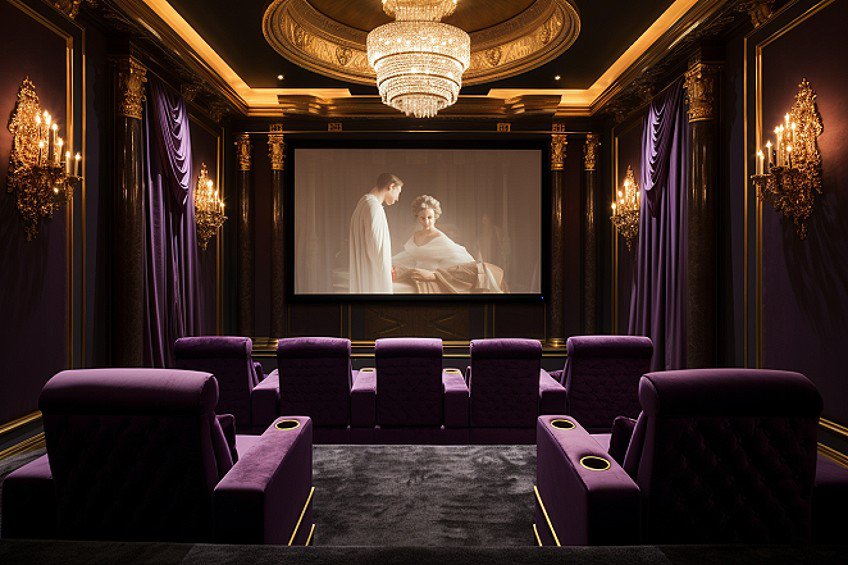
Violet Combined With Creamy Yellow
Violet’s playful energy combined with the warmth of creamy yellow creates a lively and cheerful interior palette. This combination is ideal for spaces where a vibrant and uplifting atmosphere is desired, such as kitchens or children’s rooms. The contrast between the boldness of violet and the softness of creamy yellow adds visual interest, injecting a sense of joy and positivity into the overall design.
| Shade | Hex Code | CMYK Color Code | RGB Color Code | Background Color |
|---|---|---|---|---|
| Violet | #8A2BE2 | 71, 100, 0, 11 | 138, 43, 226 | |
| Creamy Yellow | #FFFDD0 | 2, 0, 24, 0 | 255, 253, 208 |
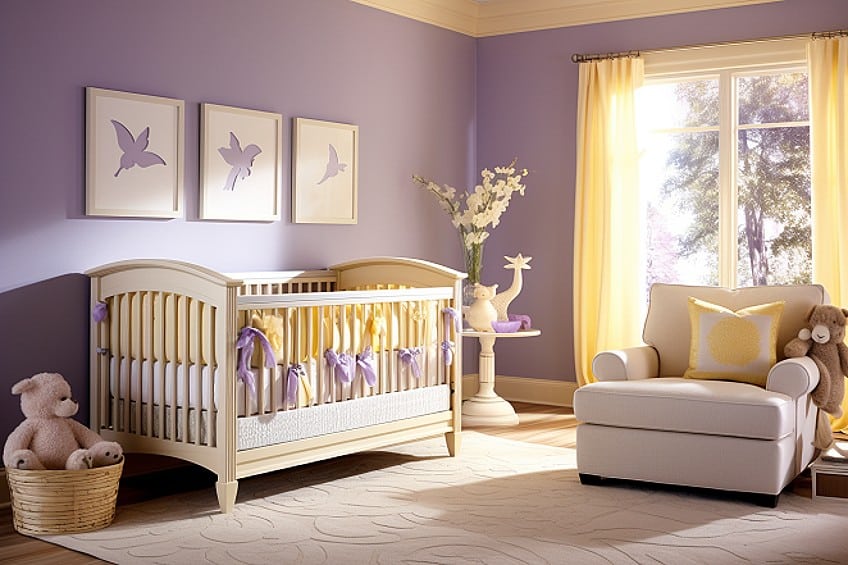
Hopefully, you now have enough knowledge of the color purple to realize that there are endless color combinations that work exceptionally well with purple, depending on its shade and hue. Whether you want to incorporate a sense of royalty that purple so easily evokes, or you relate to the spiritual background of purple, it is worth considering to incorporate into your home for a unique color palette that is a great conversation starter.
Frequently Asked Questions
What Colors Complement Purple?
When it comes to color theory, the complementary color of purple is yellow. However, aside from yellow, there are many other colors that complement purple, depending on the shade and hue of the purple in question. Among these complimenting colors are orange, blue, yellow, brown, turquoise, and cream or off-white.
What Are the Best Accent Colors for Purple?
What are the best accent colors for purple? The best accent colors for purple depend heavily on the shade of purple you are trying to match. If you are working with a cool-undertone purple, pair it with brown, cream, blue, or turquoise. Whereas warm purple looks great when combined with orange or yellow.
What Is the Best Color Combination With Purple?
What is the best color combination with purple? There are many colors that pair well with purple, depending on the specific shade of purple. According to color theory, yellow complements purple the best, as it sits directly opposite purple on the color wheel. If you are using a bright shade of purple, complement it with a lighter, toned-down shade of yellow, and vice versa.
Kylie Deyzel is an interior designer and sustainability enthusiast from Cape Town, South Africa. She has a passion for writing and educating others on various interior design topics. Her favorite interior design topics include interior design theory, interior design history, and most of all: sustainable interior design.
She received her B-tech degree in interior design from the University of Johannesburg in 2018 and has worked at various interior design firms since and had a few of her own freelance interior design clients under her company name binnekant.
Learn more about the Art in Context Team.
Cite this Article
Kylie, Deyzel, “What Colors Go With Purple? – Top 15 Perfect Color Combinations.” Art in Context. January 20, 2023. URL: https://artincontext.org/what-colors-go-with-purple/
Deyzel, K. (2023, 20 January). What Colors Go With Purple? – Top 15 Perfect Color Combinations. Art in Context. https://artincontext.org/what-colors-go-with-purple/
Deyzel, Kylie. “What Colors Go With Purple? – Top 15 Perfect Color Combinations.” Art in Context, January 20, 2023. https://artincontext.org/what-colors-go-with-purple/.


